Piriformis syndrome is something that I hear about a lot; however, I think it is poorly understood by the population as a whole. In this article, we will cover what the condition is and how to get piriformis syndrome relief. You might find that some of the facts I will reveal in this article are a little different to what you might’ve heard from your doctor…
Aims of this post:
- To learn about what piriformis syndrome is and who is at risk
- To learn how piriformis syndrome causes sciatica and what you can do to stop it
- To learn the best techniques for piriformis syndrome relief
Before we dive in, please be aware that we are part of the Amazon Affiliate programme. This page may contain Amazon affiliate links, so if you choose to purchase a product for your sciatica that we recommend through a link on this page, we will receive a small commission at no extra cost to you. This helps us keep Overcome Sciatica alive! Thank you for your support. Please be assured that we only ever recommend products that we truly believe can help.
Piriformis syndrome is a condition not of the lower back but of the hip.
The piriformis is a muscle that lies deep within the gluteal region (buttock). It is responsible for turning your legs outwards, like when you cross your legs.
It also plays an important role in walking, where it stabilises the hip and assists with what we call “extension”, when you push your hip out behind you to move forward.
In most people, the sciatic nerve runs close, but not through, the piriformis as it travels through the buttock and down the leg.
However, in about 10% of the population the sciatic nerve actually runs through the piriformis.
Usually, this doesn’t cause a problem, but if your piriformis were to get tight there is potential for it to pinch on the sciatic nerve, causing symptoms of sciatica to occur.
The red part of this diagram represents the piriformis muscle while the yellow line represents the course of the sciatic nerve. In most people this runs past the piriformis, but in some it can run through the muscle, occasionally causing piriformis syndrome.
You can read about the symptoms of sciatica in The Ultimate Guide to Sciatica.
What causes a tight piriformis?
Sitting and a poor walking stride patterns often causes tightness in the Piriformis.
In people who sit for a long period of time, the direct compression of the seat on their piriformis can also give rise to symptoms. This is why the condition is seen as something that affects sedentary office workers more frequently than active individuals.
What does piriformis syndrome feel like?
Piriformis syndrome presents as a pain in the buttock which then causes sciatica, meaning nerve-related pain down the back of the leg.
If your leg pain goes down the front of your leg or into your groin, you are unlikely to have piriformis syndrome.
Usually, sitting will aggravate symptoms. You might feel as though you are “sitting on a stone” and that you can ease this by sitting on a cushion (you should look at this article HERE for products that might help you with this!)
For pain in the buttocks, I’ve written a post specifically on how to alleviate this symptom! Read HERE.
It is unlikely that you will be experiencing back pain as a part of this condition (but back pain and piriformis syndrome could occur together – so don’t rule it out if your back hurts too!)
Remember, although back pain isn’t a part of piriformis syndrome, sometimes pain can radiate up into the back, so just because you do have back pain doesn’t mean you don’t have piriformis syndrome.
Equally, just because you have sciatica alone and no back pain doesn’t mean it is automatically piriformis syndrome; you can still have back-related sciatica without back pain.
The pain experienced with this condition is usually less severe than the pain associated with a disc bulge or prolapse. Most of my patients with true piriformis syndrome have described their pain as more of an “annoyance” than debilitating pain.
You may still experience pins and needles or numbness (you can read why in this article HERE). These symptoms are often eased by lying on one’s front, which actually often make disc-related and age-related problems in your back feel worse.
Piriformis syndrome is commonly experienced by people who work in offices or spend a lot of time sitting. The pain is likely to have developed over a prolonged period of time, rather than as the result of a single event.
Piriformis syndrome can occur in individuals of any age.
| What it feels like | How did it come on? | What makes it worse? | What makes it better? | Most likely to be… | |
| Piriformis syndrome | Usually buttock pain with dull ache or sharp pain travelling down leg.
Not usually accompanied by back pain. Often pins and needles in leg or feet. Less severe usually. |
Usually gradually. | Sitting for prolonged periods.
Crossing legs. Sometimes walking. |
Laying down on front.
Relieving pressure on bottom by using a pillow when sitting. |
Can affect any age, usually individuals who work in an office or spend long periods of time sitting. |
I feel that this condition is often over-diagnosed, as only 10% of the population are truly at risk of this condition.
Still, it does occur and there are some effective steps to treating it.
So how do we get piriformis syndrome relief?
There are three methods that I use to get piriformis syndrome relief:
- Piriformis and gluteal stretches
- Massage and trigger point release on the piriformis (you can do this at home!)
- Correcting funny walking patterns
While correcting odd walking patterns is difficult for the lay-person who doesn’t necessarily know exactly what to look for, the other 2 methods are very easy to carry out by yourself at home.
Please note: seek advice from a medical professional in order to rule out other causes of sciatica before beginning any exercises from this article in the absence of a diagnosis of piriformis syndrome. Always stop the exercises you are doing if they cause increasing pain.
1. Piriformis and gluteal stretches for piriformis syndrome relief
The exercises provided on this page for informational purposes only and are not designed to be a ‘prescription’ of any kind. Be sure to check with your healthcare provider before you begin any new exercise programme.
The following stretches should always be performed GENTLY!
I usually recommend taking them into a position where one feels a mild-moderate stretch on the buttock area. This position can usually be held for 30 seconds.
Instructions: Laying on the floor, cross the affected leg over the non-affected leg (in the picture, the right leg is the affected leg). Turn the leg outwards as far as is comfortable. Reach through the unaffected leg with the hands and pull upwards. Feel a stretch in the buttock (on the right leg in the picture). Hold for 30 seconds.
Gluteal stretch – Sitting up on the floor or on the bed. Cross the affected leg over the unaffected leg. In the picture, the left leg is the affected leg. Hug the knee across the body as shown. Feel a stretch in the buttock. Hold for 30 seconds.
Are You Looking for RAPID Relief from Sciatica?
My good friend, colleague and fellow international sciatica expert, Dean Volk, has a brand new sciatica relief video course available – and I’m delighted to be an official sponsor!
Check out Dean Volk’s “Kicking Sciatica OUT of the Butt!” Online Pain Relief Course Here!
I can proudly recommend Dean and his course for sciatica sufferers – because I’ve seen his incredible results first-hand. You can check out his course (and get lifetime access to the videos and bonus content) by clicking HERE.
2. Massage and trigger point release for piriformis syndrome relief
For this part, a good old-fashioned tennis or squash ball can be used to “release” the tight muscles in the buttock. This part of the programme is not suitable for everyone, so proceed with caution.
The reason direct pressure works to release muscles is not fully known, but we think it might be due to the pressure sending certain messages up to the brain which causes a relaxation effect at the target area. The other theory is that we are starving the area of blood flow and therefore oxygen, so it cannot stay tense and is forced to relax.
The trigger points we are aiming for will sit in these three areas:
The red ‘X’ marks the rough points where you should be aiming the pressure from the ball
I usually find a firm floor with something like a yoga mat laid on top of it. Place the tennis ball on the floor and gently place the body weight over it, rolling it around the target area.
Do this for 1-2 minutes at a time. Be careful not to overdo this as you can bruise yourself!
There may be an unpleasant sensation as pressure is applied; this is normal but the pain should not exceed mild-moderate.
What Else Can I Do About Piriformis Syndrome?
My recommended next step for you would be to check out my other article on piriformis syndrome: The Ultimate Guide to Piriformis Syndrome Treatment – here!
Summary
So those are my top tips for finding piriformis syndrome relief. As I said before, piriformis syndrome is very OVER-diagnosed, so if you have been diagnosed with it and you’re not sure based on what you have read here, it may be worth getting a second opinion.
When it comes to sciatica, it is possible to have more than one thing as the cause of your sciatic pain. One may find that putting into action these points relieves a certain amount of pain but not all of it.
For more information about back pain when sitting, see this article HERE.
I hope you have learnt something from this article, and that the tips within have been useful in some way to you. If they have, I’d love to know! Simply leave a comment below if you have found them helpful or if you can think of any way I can improve them in order to serve you better.
As always, thanks for reading.
The information on Overcome Sciatica should never be used as a substitute for medical advice from a doctor. Never put into action any tips or techniques from Overcome Sciatica without checking with your doctor first. Please see full terms of use here.

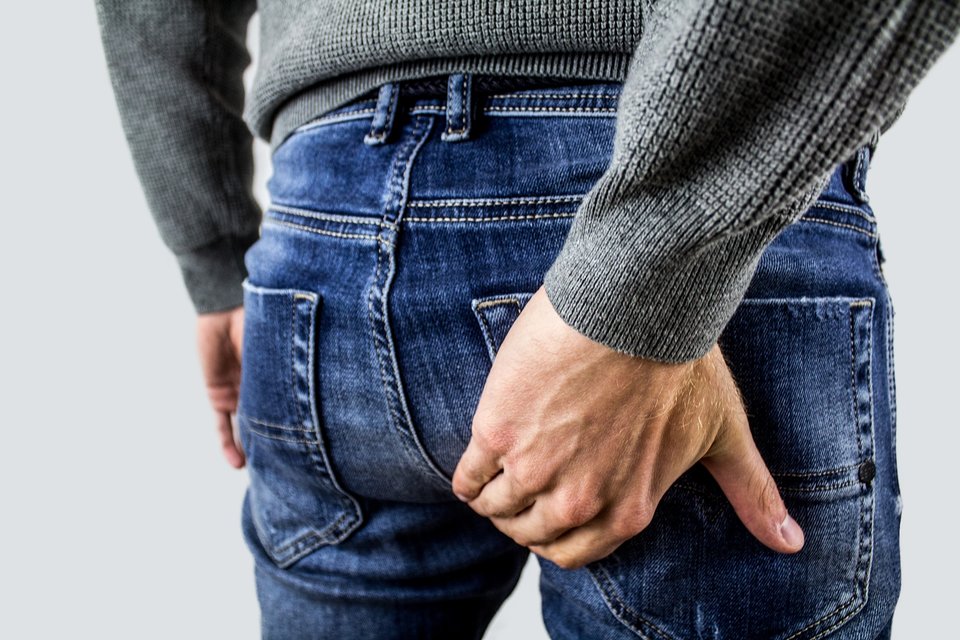
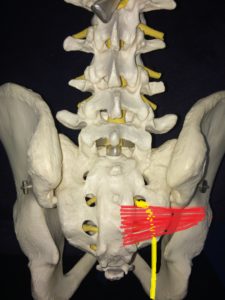
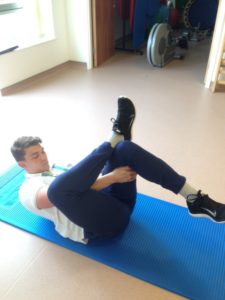
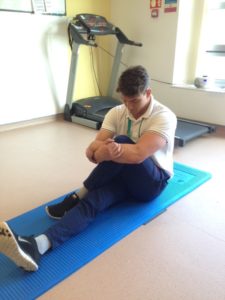

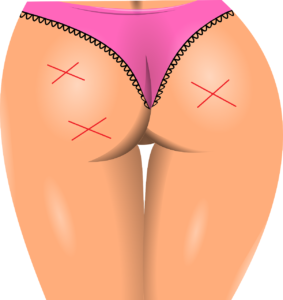
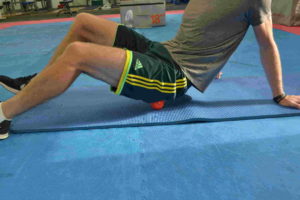
I’d advise not doing the first exercise with your head raised as in the picture as this will put strain on your neck and top of shoulder.
Hi Alan,
Yes, I agree! Very good point, my head is raised in the picture due to trying to instruct the photographer! I will re-shoot the picture to make this clear in the near future.
Many thanks,
Will
I found this very helpfull but my periformous pulled muscle from twist of my leg to stop me from falling has been absolutely excruciating and got worse after an osteopath did really extensive treatment seven days ago I haven’t been able to walk or put pressure on my leg has been excruciating for me but thank you for your article
Excellent article. Thank you.